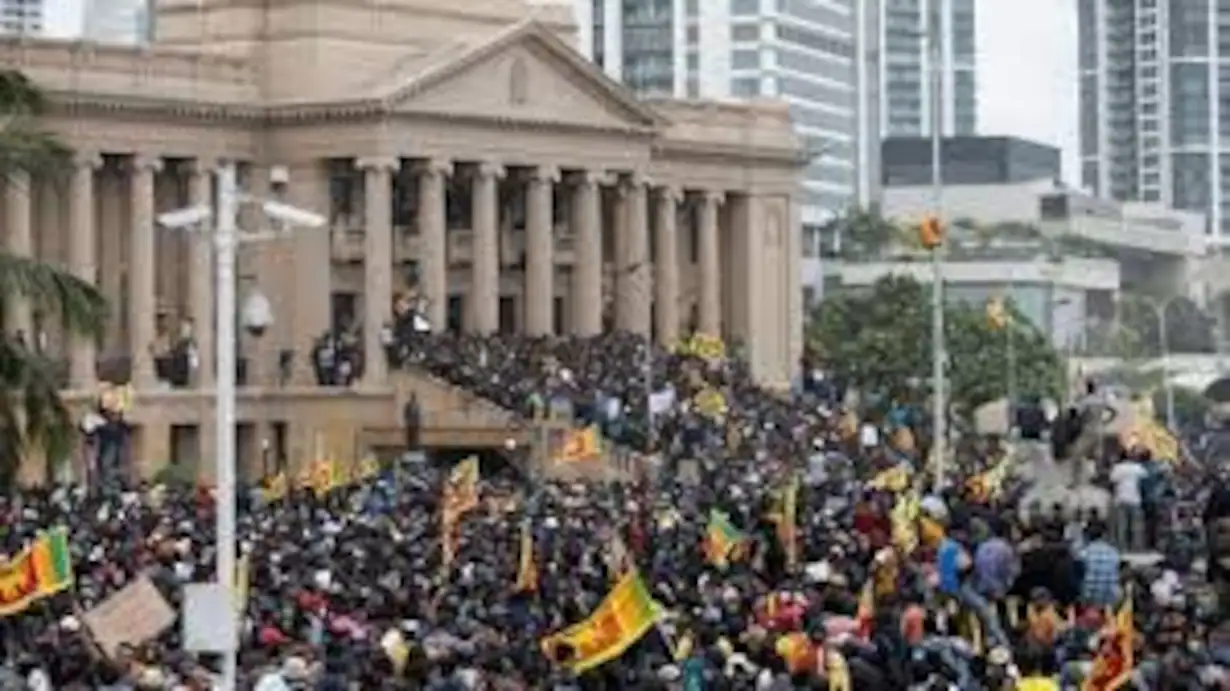Former Deputy Chairman Niti Aayog Arvind Panagariya on Sunday said he would be ‘silly’ to compare the economic situation of Sri Lanka with India.
However, lessons can be learned from the economic crisis in the island country.
Mr. Panagariya, in an interview with PTI, further said that since the 1991 balance of the balance sheet, the government had successfully managed the macroeconomic economy conservatively.He showed that in the case of India, fiscal deficits have not been permitted to get out of hand, the exchange rate has been permitted to depreciate so that the current deficit remains low, monetary policy has been detained so that inflation remains low, and the opening of financial capital flow has been carried out in a calibrated manner. “This is a silly comparison … Suggestions from every parallel between India and Sri Lanka are currently ridiculous,” Panagariya said, adding that India rarely borrowed abroad to finance fiscal deficits.
The leading economist was asked to comment on the statement of former President Rahul Gandhi where Gandhi attacked the Modi government about the increase in inflation and unemployment and said India looked “very similar to Sri Lanka” and the center should not distract people.
Sri Lanka wrestled with a severe economic crisis, and India was at the forefront in expanding economic assistance to Sri Lanka.
He said, “We must take lessons from Sri Lanka’s experience for our macroeconomic management in the future. That is the main relevance of the events there to India.”
Mr Panagariya, an economic professor at Columbia University, answered questions about unemployment and stated that Indian problems were not unemployment; Conversely, it is a lack of work or low productivity.
“We need to work to create work that is paid well for the masses,” he said, adding that the unemployment rate even in the 2020-21 Covid year down to 4.2 percent compared to 6.1 percent in 2017-18.
The leading economist notes that those who have lifted the hue and cry at the 6.1 percent level in 2017-18 have now been completely silent at the unemployment rate reported by the Periodic Labor Force Survey (PLFS).
In the question raised by several experts about Indian official data about various subjects, he said the collection of GDP, PLF, and vital state statistics well in international comparison.
“There are some original criticisms that need to be handled. We certainly need to invest more in improving our data collection,” he said. After saying this, Panagariya said, ‘We must also call and reject many criticisms motivated’.
For example, according to him, those who like The Economist and New York Times provide an estimated alternative Covid death in India need to apply higher standards to evaluate their own methodology (very disabled).
Asked whether according to him the Indian economy was in a better position than eight years ago, he said, “You can see the indicators you like: per capita income, poverty, life expectancy, nutrition, and infant death. You will see an increase in each of them -Cut this indicator. “
Responding to the question of Indian rupees that weakened to the lowest record, Panagariya said the increase in interest rates in the United States had caused capital to come out of the developing and European markets to the United States.
“It has caused depreciation of almost all major currencies to the dollar. Rupees are not unique in this regard,” he said, added that if there is, Rupee has depreciated less than most other currencies in part due to severe intervention by RBI.
MR Panagariya showed that while during 2022, Rupee had depreciated 7 percent of the dollar, as a comparison, Euro fell 13 percent, British pounds by 11 percent and Japanese Yen by 16 percent.
In Asia also, South Korea won, Peso Philippines, Thailand Baht and the Taiwan dollar all fell more than rupees against the US dollar.
“The net results are appreciation for Rupees for all these currencies,” he said.
Regarding the concern of Economic Recession, Panagariya observed that continuous inflation at a level that was not witnessed in four decades and suffered from inflation expectations, especially in the United States, means that one way for the central bank to break the back of inflation is through a recession.
“That is, the central bank must continue to raise interest rates until economic activities see a decline and force rest in the high inflation inflation cycle high.”In India, we don’t face the same problem,” he said.
Answering questions about high inflation, the leading economist said the source of Indian inflation problems was mostly external-fishered suddenly in oil and cereal prices triggered by the Russian-Ukraine War.
With RBI raising interest rates, oil prices see some disbursements and fruits and the latest vegetable plants around the corner, he said, “We will see inflation back under 6 percent in the second half of FY23, as shown by the Governor’s RBI.”
Mr Pangariya noted that Indian inflation at 7 percent exceeded the 6 percent tolerance limit under the targeting of inflation with only one percentage point.
